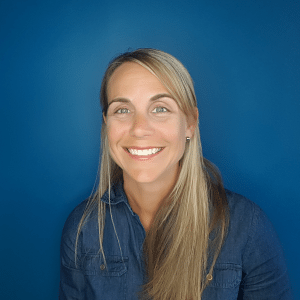New Tool Available to Support Transparent and Equitable Lead Service Line Replacement
by Laura Fudala and Sarah Goodwin
The replacement of lead service lines (LSLs) is an increasingly important public health and environmental justice goal for government leaders at all levels, from the Biden-Harris Administration down to individual cities and towns. Historically, efforts to replace lead service lines have sometimes exacerbated the inequities of lead exposure by serving wealthier and whiter areas first and faster than low-income and majority-Black neighborhoods. However, replacement programs that get it right and prioritize and center equity can serve as a model not only for addressing lead in water but also for addressing other environmental hazards (including lead paint) and environmental justice. (For more information and examples of cities leading the way on this, see our June 2023 blog, “Lead Service Lines: Connecting to Environmental Justice.“)
Last month, the Environmental Defense Fund (EDF) launched a national map of lead service line replacement programs designed to highlight communities where active programs are in place and surface areas across the country where inaction remains. The map contains profiles on over 200 individual lead service line replacement programs that publicly share information about their efforts. Each profile includes available information on lead service line replacement programs, including links to utility webpages, online interactive lead service line maps, efforts to prioritize vulnerable populations, and financial support for private-side replacement. The map also contains optional layers that show additional data, such as the “Top 10 Cities” in the country with the most lead service lines, EPA estimates for the number of lead service lines per state, and states that have mandated lead service line replacement.
EDF also invites users to submit information about additional programs to include both now and in the months to come as more utilities ramp up lead service line replacement programs and share more about their efforts with the communities they serve. The number of utilities that have lead service line replacement program should increase in the coming months and years, as EPA’s proposed Lead and Copper Rule Improvements require most utilities to commit to a plan to replace all lead service lines in 10 years.
So, why should you—state/local government and nonprofit healthy housing champions and national policy partners—care about this map? How might it be useful to your efforts to reduce environmental hazards and improve housing quality?
To use the map, first, check out the area(s) of interest to you and see what’s there.
- Is there an active program listed? Do you know about the work? Can you explore the website or reach out to learn more?
- Is there nothing included for your community yet? Do you know (or can you find out) whether there is a program operating that is not sharing much publicly about the effort? Is the utility just getting started with an lead service line replacement program?
Wherever your community is in the process, you can use the map to learn more about local efforts, find ways to impact the program, and engage in support of the work. Maybe you can encourage more transparency, ask what community supports/partnerships would be beneficial, share data to support an increased focus on equity, support outreach and awareness initiatives, et cetera.
If you don’t have anything in your area(s) yet, check out the profiles and websites of others similar to yours or nearby. Try to learn more about their programs and figure out why/how they got started. Did they access a funding source that might be available? Do they have strong political commitment to lead service line replacement? Does the state prioritize these activities? Perhaps you can use this information to pressure your community to get started and meet or exceed these comparable activities, or to identify partners in nearby communities who could help you push for a similar program in your area.
From a broader perspective, the map can also surface patterns—such as spots with less activity—and help both individual communities and national policy partners consider why and/or take secondary steps to learn more. Is there a workforce concern hindering activity? Are there local political or social dynamics to consider? Are there areas with activity not represented due to a general hesitation over data transparency? Are certain areas more—or less—supportive of funding private-side replacement? Have individual states put policy supports or funding sources in place to encourage replacement programs? Can we see patterns where there is a stronger focus on vulnerable populations? We’re looking forward to using this tool to think about these questions and shape future discussions.
We applaud EDF’s effort to collect publicly available information about lead service line replacement programs nationwide, share it transparently, and intentionally shine a light on program elements that emphasize public health and equity (e.g., focused efforts to support vulnerable populations and funding for private-side replacements). This tool will increase awareness and inspire action at all levels—from individual residents who deserve to know more about lead service line replacement efforts in their community to national policy partners advocating for increased support of private side replacements—and is a valuable addition to our collective toolbox. The value that will continue to increase as more and more lead service line replacement programs are added, additional details on the programs become more transparent, and EDF continues to grow and evolve the functionality. We are excited to see what comes next!
For more information about lead service line replacement programs and how equity can be centered in them, visit the Lead Service Line Replacement Collaborative’s website and their Guide to Equity Analysis.
 Laura Fudala, project manager, joined NCHH in January 2014 as a project coordinator to provide a wide variety of coordination, research, writing, and support functions on multiple NCHH projects. She currently manages a New York State Department of Health contract and an EPA cooperative agreement that together provide coordination, evaluation, technical, training, and/or programmatic support for healthy homes stakeholders such as the New York State Childhood Lead Poisoning Primary Prevention Program and those working to support the launch and growth of large-scale, evidence-based, sustainable asthma home visiting programs.
Laura Fudala, project manager, joined NCHH in January 2014 as a project coordinator to provide a wide variety of coordination, research, writing, and support functions on multiple NCHH projects. She currently manages a New York State Department of Health contract and an EPA cooperative agreement that together provide coordination, evaluation, technical, training, and/or programmatic support for healthy homes stakeholders such as the New York State Childhood Lead Poisoning Primary Prevention Program and those working to support the launch and growth of large-scale, evidence-based, sustainable asthma home visiting programs.
 Sarah Goodwin joined NCHH as a policy analyst in June 2017. She previously served NCHH as a policy intern, helping to establish and run the Find It, Fix It, Fund It lead action drive and its work groups. She holds a Bachelor of Arts degree in Interdisciplinary Studies: Communications, Legal Institutions, Economics, and Government from American University.
Sarah Goodwin joined NCHH as a policy analyst in June 2017. She previously served NCHH as a policy intern, helping to establish and run the Find It, Fix It, Fund It lead action drive and its work groups. She holds a Bachelor of Arts degree in Interdisciplinary Studies: Communications, Legal Institutions, Economics, and Government from American University.
